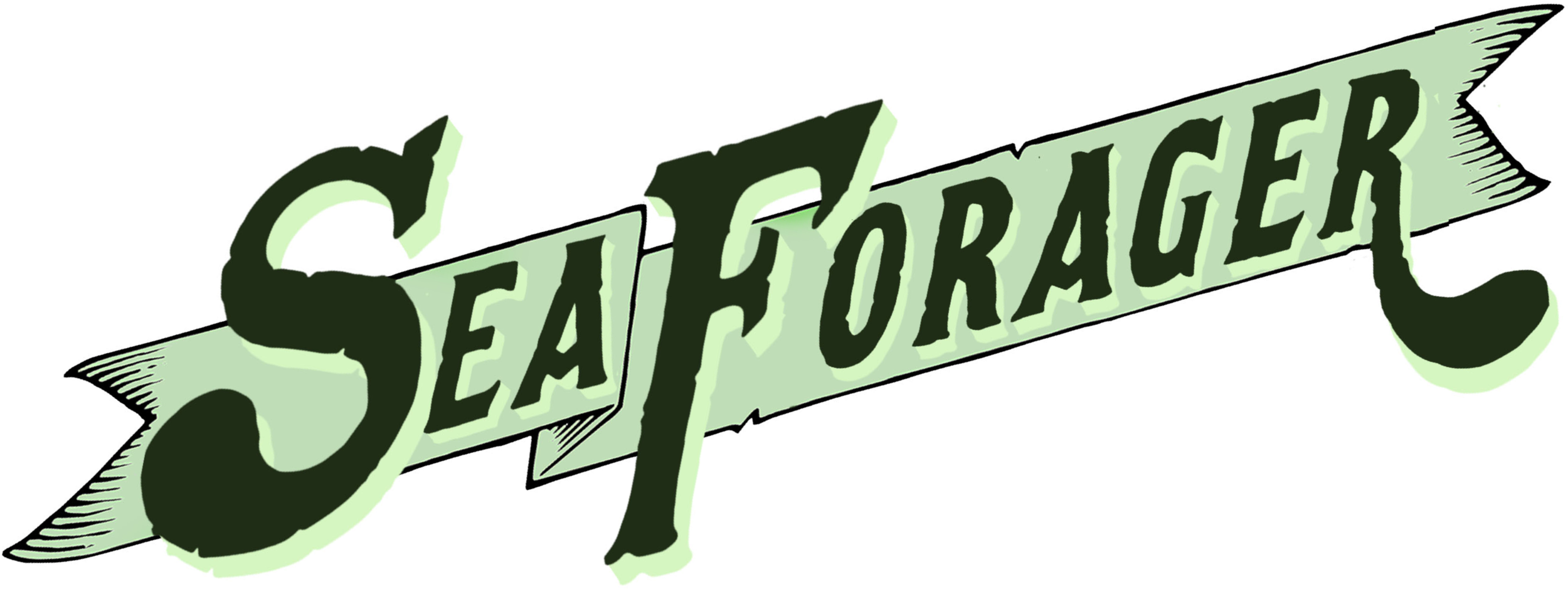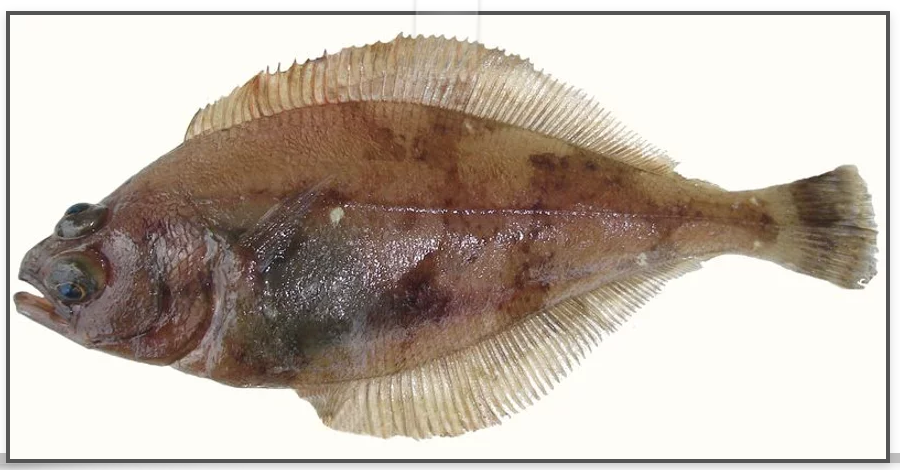Sand Dab
(spring - summer - fall, and occasionally by hook and line in the winter)
Lovingly called "dabs" by fishermen and "pescatarians" both.
The Meat
Sand dabs are a San Francisco delicacy. There are probably many ways they could be cooked, but the only way I have ever done a dab is to pan fry it. In truth, it's almost like they were designed to this end. Bread crumb/eggwash and drop 'em in the hot skillet. Yum!
Prep
Sand dabs are the easiest of all fish to clean. One stroke of the blade takes off the head and fins. The second takes off the dorsal. And that's that. Nevertheless, yours will almost always arrive pan ready. If they seem a little bit rough cut or bloody, it's because I don't like them to be rinsed in fresh water and then sit in a plastic baggie all day in the cooler. So feel free to rinse these off if you so desire. Remember, dabs are super delicate. So don't let them soak in fresh water and be mindful of that spatula when frying them!
The easiest fish to clean. One chop does it all.
Gear and fishery info
As of this writing, the only sand dabs you will get from me are the ones coming off The Mr. Morgan out of Half Moon Bay. And the ones that are caught by a few ridiculously skilled guys in the Santa Cruz area who actually go out and fish dabs with hook and line! (These hook and line dabs are the ones I prefer). Try to imagine how difficult this is to do. These guys (and I was one of them once), fish with 12 baited hooks per line. Dropping them down 200 feet. And then reeling them up. 250 pounds is considered an amazing day for these dudes. In the late fall and winter, your dabs were reeled in by hand. Not sure about you, but that sure makes them taste a lot better to me :)
Now, as far as The Mr. Morgan is concerned... here's the skinny. This is the only groundfish boat on the West Coast that uses a Scottish Seine. This net is far more gentle on the benthic environment than the other type of net (bottom trawl) that catches the lion's share of sand dabs, petrale, rex sole, dover sole and other groundfish on the West Coast. I am not as deeply opposed to California bottom trawl as my biggest provider Kenny. But since I'm trying to talk the sustainability language why not shoot for the stars and get my fish from the one boat that's really doing it the right way? Feel me?
The argument I have previously made in favor of the local drag boat fleet is that...
They are extremely well monitored (one might even say harrassed)
They are fishing healthy stocks of fish, largely over sandy bottom.
There aren't that many of them any more.
They provide affordable fish to the populace
They have, weekly, monthly, seasonal and yearly quotas. By catch quotas, onboard fishery observers (whose salaries are paid for by the fisherman!) etc. etc.
The argument against is that drag boats...
destroy habitat
take too many fish
have problematic by-catch
Try to get anyone other than an invertebrate biologist to tell you what kind of creatures are destroyed when a drag boat scrapes the bottom of the ocean and you will end up with blank stares and shrugs. The thing is, dragging over sandy bottom is potentially not as problematic as dragging over a reef, but still, it ain't great. The “planktonic cloud,” that great shimmering biomass of newly spawned microscopic life that forms the basis of the entire Pacific food web is at issue. What happens when you drag a net with otter doors and rollers over a sandy bottom where all those new life forms have recently settled? No one really knows. The drag boats of the Atlantic Ocean wiped out the world's most important and historic fishery: cod, in just under one generation. After looking at the horrifying satelite photos of the scars left by bottom draggers or images of the denuded floor of the Atlantic ocean, it's kind of hard to make the case for continued drag fishing anywhere on the planet... for instance, in this video we see a drag net scraping a sandy/gravel bottom. I mean even if you turn Robert Redford off, doesn't it just look wrong?
I dunno. I hate to demonize a gear type but... damn.
Here's another really depressing video that will ruin your day, so I encourage you not to watch it:
The boat featured here is ten times the size of anything we have here on the West Coast, but still... it kind of shows you the mentality that one has to embrace in order to support this kind of fishing. (It makes my hook and line sand dab guys seem deeply heroic).
Unfortunately, I see both sides of the argument. The trawl fleet here is a pittance of what it once was. It's tightly regulated. It focuses on sandy bottom species (most of the time).
Nevertheless, I figure, why not take the high moral ground? Until someone produces a reliable report that there is no more damage caused by these boats, than there is by a Scottish seine, I'll get my sand dabs and petrales from the Mr. Morgan. And if I end up not being able to sell as many groundfish (petrale, rex, dover, and english soles, chillipepper, thorny heads, etc) so be it. I do not begrudge anyone else dealing in those dragged fish. I just don't intend to do it myself, not until someone proves to me it's a sustainable way to harvest our local groundfish.
#KnowYourFisherman
Our sanddabs are caught by Captain Steve Fitz on F/V Mr. Morgan
Fish Nerdism 101
Sand dabs are in the left-eye flounder family. There are three types of dabs: speckled, Pacific, longfin. The ones we will be providing are almost all Pacifics. Pacific dabs can be found in local waters anywhere from 30 to 1800 feet. Most commonly over muddy, or sandy-mud type bottoms. Maximum size is 16 inches and 2 pounds, (Well, that's what “The Status of the Fisheries Report 2001,” tells us, but 2 pounds is a huge sand dab! If I ever see one that big I'm stuffing it and hanging it on my wall) but most are 7-10 inches and 0.5 pounds. Pacific dabs live up to 10 years, which though it may seem long, is a very short lifespan compared to a lot of other local species. Especially local bottom dwellers...
Health concerns
I've never read or heard anything about dabs being problematic health wise. It would seem unlikely that they are high in mercury or anything else because they don't live particularly long and are extremely low on the food chain.
Parting Shots
Every ten years or so, massive numbers of sand dabs come into San Francisco Bay and can be caught by the bucket load on all the local piers from downtown SF to Fort Baker. When I worked for the Fish and Game Department I had the priveledge of witnessing one of these events. It lasted from December to March 2007. On one foggy weekend in February I estimated at least one thousand pounds of sand dabs left Fort Point Pier in plastic buckets. This is a lot of fish when you consider that dabs typically weigh about a half a pound and every single one of them was caught by hook and line.
In one of the silliest adventures of my fishing life, I convinced my homey Mikey D. that we could make a living catching sand dabs by dingle bar. We went out and bought 40 one inch diameter sticks of PVC. Drilled holes through them and attached 12 hooks to each stick—the legal limit. We then weighted each stick at both ends and tied the PVC pieces to styro foam buoys. It was a brutally rough day on the water and handling the be-hooked sticks (dingle bars) was like juggling porcupines or sea urchins. I still have scars on my fingers from this miserable experience. In the end I think we caught 17 sand dabs. For like 9 hours of vomitous fishing with bleeding fingers. At one point Mikey almost fell off the boat. The goal was to produce the most sustainable sand dabs on the planet—dingle bar-caught. But it turned out to be not very sustainable for the fishermen, we almost killed ourselves. Right now I get my winter dabs from Danny and Cody on the Green Machine. These guys have serious skills. 250 pounds they caught today. Unreals. Anyhoo... there's a lot of great stuf on sand dabs in Milton Love's classic tome: Certainly More than You Want To Know About The Fishes Of The Pacific Coast...so go buy it!
-Kirk-out
Recipes
Facts
Scientific Name: Citharichthys sordidus
Habitat: They are most commonly found at a depths anywhere from 30 to 1800 feet in sandy-mud environments, though the young inhabit shallower waters, occasionally moving into SF Bay (in the winter) in huge numbers.
Diet: An opportunistic predator, feeding on a variety of crustaceans, as well as smaller fish, squid, and octopuses.
Size: Maximum size is 16 inches and 2 pounds--and that's a lunker dab!
Range: Pacific sanddabs occur from Cape San Lucas, Baja California, to the Bering Sea. They seldom inhabit water that is shallower than 30 feet or deeper than 1,800 feet. They are most abundant at depths of 120 to 300 feet.






Sand dabs are a San Francisco delicacy! There are probably many ways they could be cooked, but the only way I have ever done a dab is to pan fry it. In truth, it's almost like they were designed to this end. Bread crumb/eggwash and drop 'em in the hot skillet. Yum!